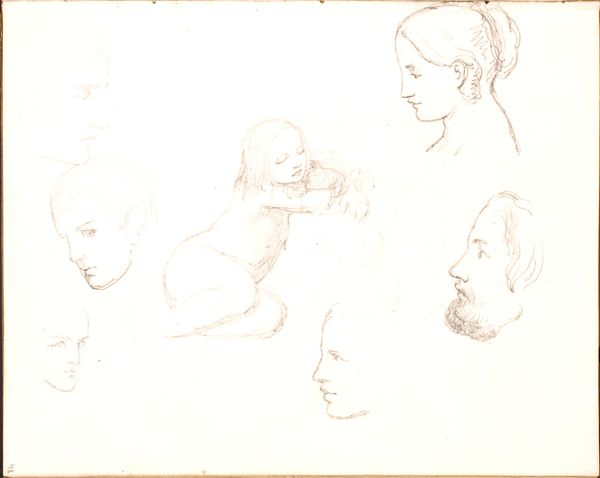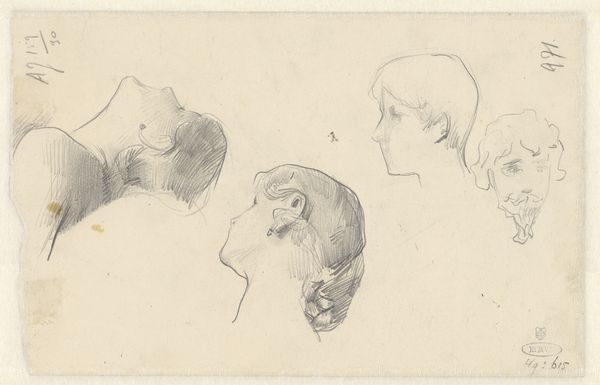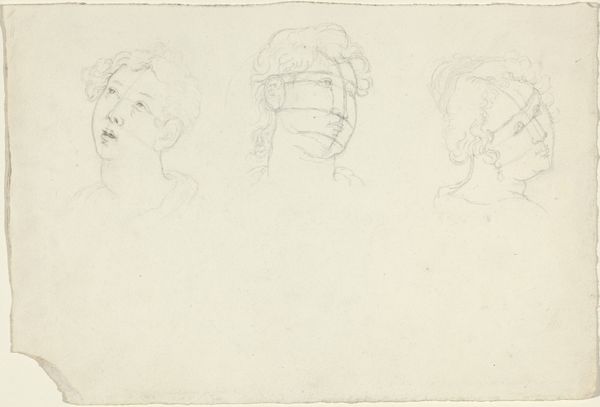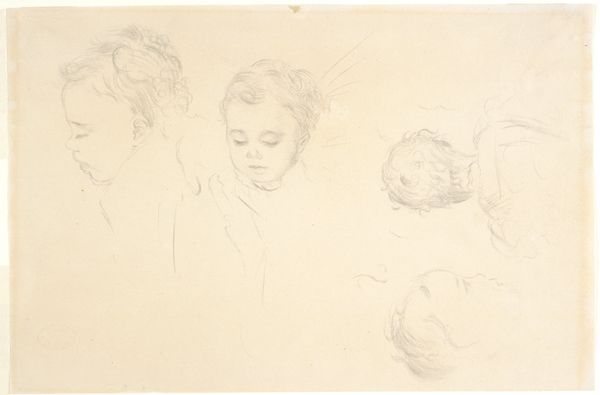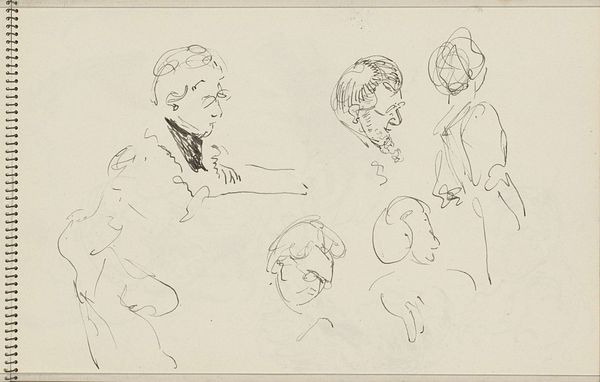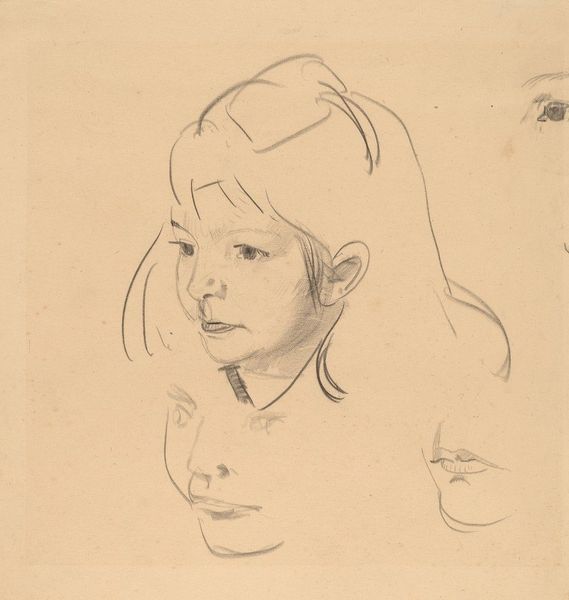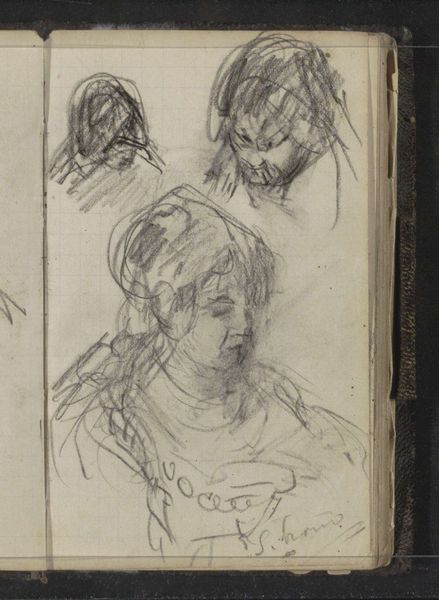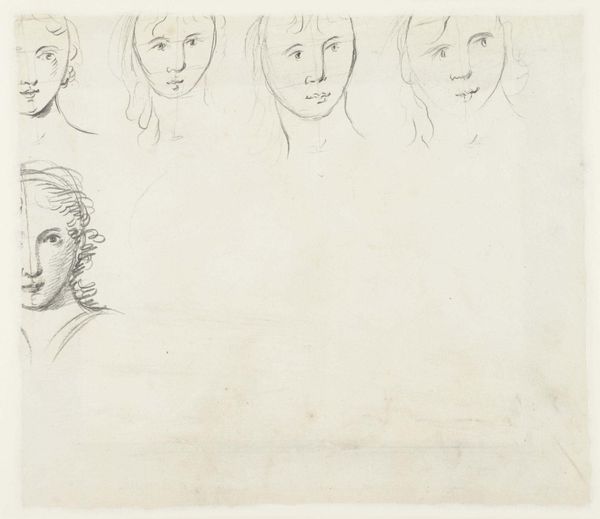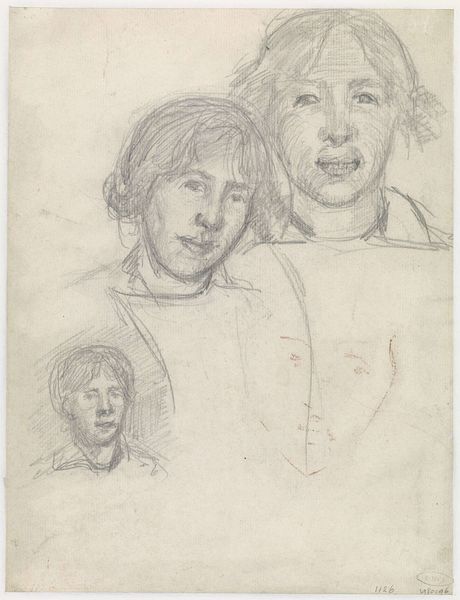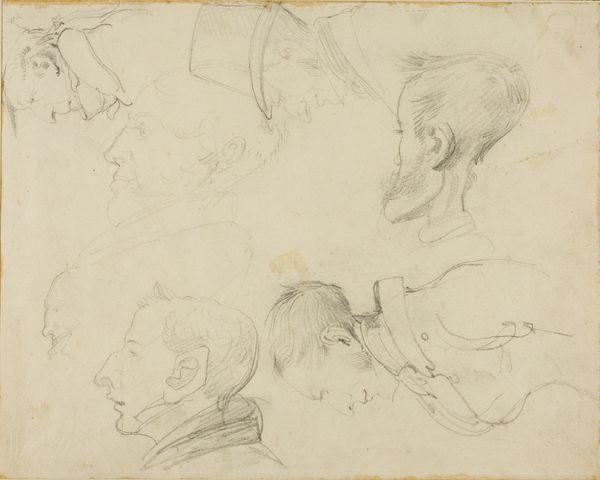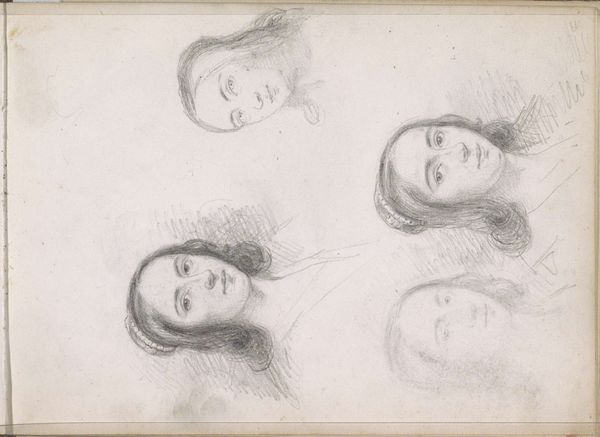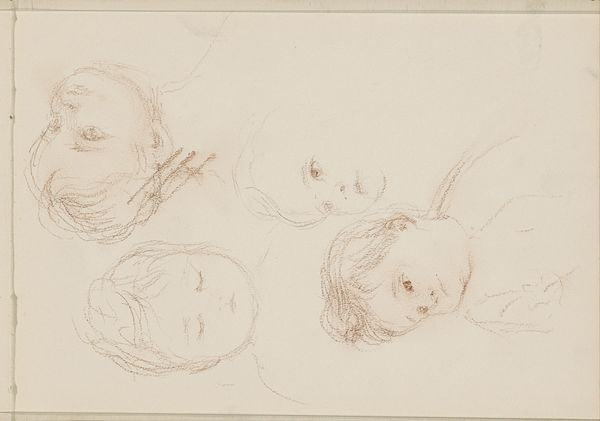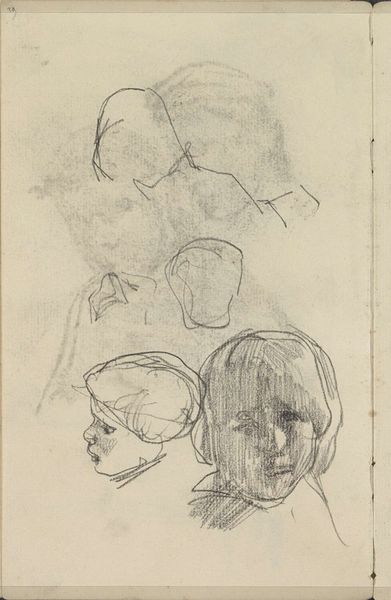
drawing, pencil
#
portrait
#
drawing
#
pencil
#
portrait drawing
#
academic-art
#
realism
Copyright: Public Domain
Curator: Let's turn our attention to "Head study (Nubia)," a pencil drawing executed around 1850 by Wilhelm Gentz, residing here at the Städel Museum. Editor: My first impression is one of ethereality, almost fleeting. The pencil work is so delicate, giving the figures a kind of transient presence. The material aspect speaks to a moment captured rather than a definitive statement. Curator: Precisely. Gentz was deeply involved in the academic artistic circles of his time. Drawings such as this were quite common in the 19th century and it highlights an interest in ethnography that shaped European perceptions and classifications of cultures during the colonial era. The 'study' aspect speaks directly to academic artistic processes. Editor: Interesting. So, even in its preliminary state, this pencil drawing reveals an implicit system of labor and knowledge production. The graphite itself, where was it sourced, who processed it? Was the model paid? Curator: Such queries get us into complex social relations. Nubia, a region encompassing parts of modern Sudan and Egypt, was undergoing significant geopolitical shifts. Egypt at the time experienced French, Ottoman and British interest with implications to its power structures. It's impossible to consider these sketches without acknowledging the inherent power dynamics at play. How European artists and institutions defined and portrayed non-European populations reflected and further cemented existing societal biases. Editor: Yes, and the rapid strokes also imply an active hand in portraying an “other,” rather than fully attempting to capture all nuance and subtleties of these sitters. The efficiency of this medium suggests that the production value and material concern outweighed the intention. How was this then regarded back in the studio, within academic circles, how were these drawings viewed and commodified? Curator: Exactly. Gentz certainly wanted to document what he witnessed with supposed accuracy, catering to popular fascinations of the exotic, all circulating within the commercialised art world. These "studies" could easily turn into larger paintings that commanded high prices for European audiences, for example. These images played a pivotal role in creating a visual lexicon of cultural stereotypes that proved remarkably enduring. Editor: I see your point, that this detailed approach allows for commercial scalability. Considering this, even these small head studies provide insight into cultural frameworks and the distribution of power within art itself. Curator: Yes, its seemingly quiet form, like so many artistic creations, are actually deeply embedded within systems of representation and authority. Editor: Agreed. Examining these subtleties enables us to ask increasingly critical questions.
Comments
No comments
Be the first to comment and join the conversation on the ultimate creative platform.
